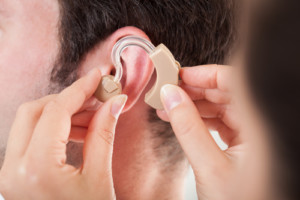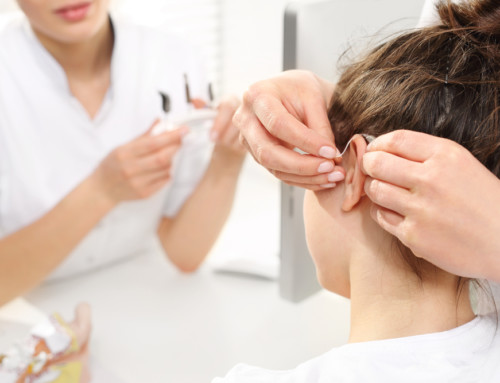 If you’re experiencing hearing loss, you’re not alone. In fact, more than 37 million Americans have reported some kind of hearing issue.
If you’re experiencing hearing loss, you’re not alone. In fact, more than 37 million Americans have reported some kind of hearing issue.
If you’re hard of hearing or have some degree of hearing loss, there’s good news: there are plenty of ways to turn up the volume of the world around you. The two most popular ways to increase your hearing levels are with hearing aids or personal sound amplification devices (PSAPs). The best solution for you depends on what type of hearing loss you’re experiencing, in addition to your lifestyle and comfort needs.
While hearing aids and PSAPs may sound like similar devices, there are some important differences between the two of them. Here are a few of the ways hearing aids and PSAPs differ, and some suggestions on how you can decide which one is right for you.
Hearing Aids
Hearing aids are wearable sound-amplifying devices that are useful for hearing conversations, understanding dialogue in large environments (like a theater or lecture hall), and even hearing everyday noises (like the doorbell or TV). They are the traditional solution for hearing loss — in fact, they’ve been around in some form or another since the 17th century.
These devices are FDA-regulated and undergo extensive testing before they are made publicly available for use. They are also highly customizable, and can even be configured to focus on specific types of sounds or volume levels.
There are many types of hearing aid models on the market:
- Behind-the-ear (BTE): a custom-molded device that loops behind the ear and directs sound into the ear canal through specially engineered tubes.
- In-the-ear (ITE): a traditional, reliable option for low-dexterity patients. It has a custom-molded body that sits in the ear and channels sound into the ear canal.
- Completely in the ear canal (CIC): a device within the ear canal that has a nearly invisible look. It is best suited for individuals with mild-to-moderate hearing loss.
- Open-fit miniatures: a soft tube sits in the ear and channels sound, but still allows natural sound to enter the ear as well.
Hearing aids are a versatile, effective option for better hearing. Regardless of your degree of hearing loss, there is a hearing aid available for you.
However, hearing aids are a relatively expensive option for aiding hearing loss. A hearing aid can cost anywhere between $1000 to $3000 per ear (or even more for certain types), and Medicare doesn’t typically cover them. In fact, due to their high cost, only 10-20% of people who could benefit from a hearing aid actually use one.
PSAPs
Because of the high price of hearing aids, PSAPs have risen in popularity because they are more affordable and more accessible. PSAPs sell for as low as $50, and unlike hearing aids, you can get them over the counter or even online.
However, the FDA does not consider PSAPs to be a solution for hearing loss because they do not meet the criteria to be classified as a medical device. The FDA describes these devices as alternative options for hearing soft sounds during recreational activities (like hunting or bird watching), presentations, or lecture events.
Even though they are not regulated by the FDA, PSAPs are subject to regulations outlined by the Radiation Control for Health and Safety Act of 1968.
And unlike hearing aids, PSAPS are not customized for individual wearers — they are constructed with a one-size-fits-all design in mind. PSAPs aren’t flexible in functionality, either: they only increase the volume of most ambient and surrounding noise, which can be problematic if you’re trying to isolate one specific sound or source.
If you choose a PSAP, be careful that it doesn’t exceed the recommended volume level — loud noises can damage the ear and worsen your hearing loss.
Making Your Choice
If you want to raise the volume of ambient sounds around you for recreational purposes, a PSAP may help serve your purpose. But if you’re looking for a device that can help with moderate-to-severe hearing loss, you might consider a hearing aid over a PSAP.
If you suspect you’re experiencing a form of hearing loss, talk to your doctor before making any decision. Contact the medical professionals at Tri-City Medical Center to set up a hearing check up today.





